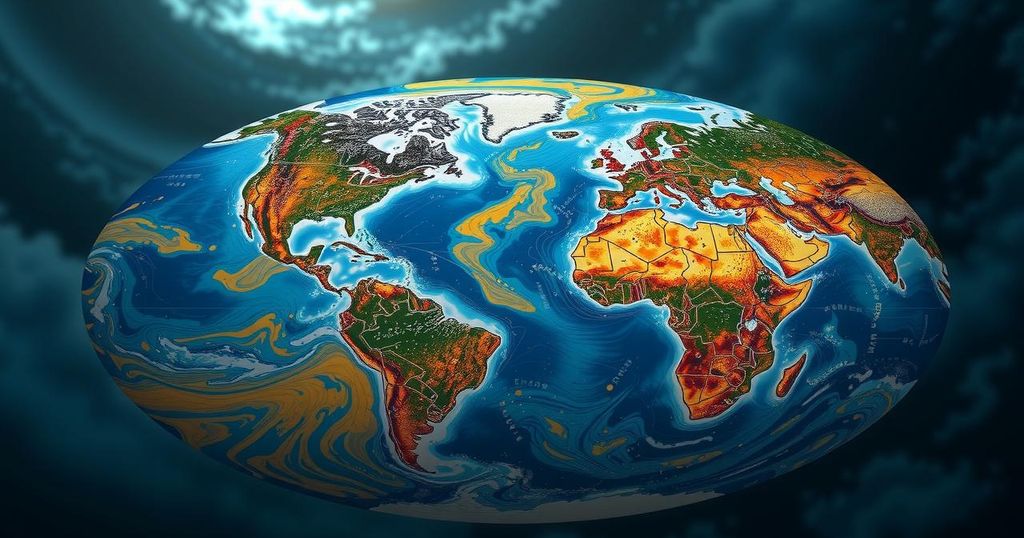A modeling study from Duke University indicates that El Niño oscillations have existed for over 250 million years, showing stronger intensity in the past compared to today’s variations. The research highlights the importance of ocean temperature and atmospheric wind patterns in these climatic behaviors.
Recent modeling experiments conducted by researchers from Duke University reveal that the El Niño oscillation, characterized by significant changes in weather patterns due to warm ocean waters in the tropical Pacific, has existed for at least 250 million years. This research indicates that the temperature fluctuations associated with El Niño and its counterpart La Niña were more pronounced in the historical climate than they currently are. The study, published on October 21 in the Proceedings of the National Academy of Sciences, utilized advanced climate modeling techniques to support its findings. Shineng Hu, an assistant professor of climate dynamics at Duke University, stated, “In each experiment, we see active El Niño Southern Oscillation, and it’s almost all stronger than what we have now.” Using a model employed by the Intergovernmental Panel on Climate Change (IPCC) to predict future climate scenarios, the researchers simulated climate conditions from eras long past by creating 10-million-year segments. The study highlights the significance of both the thermal structure of the ocean and atmospheric phenomena, particularly ocean surface winds, in influencing the intensity of the El Niño oscillation. Hu’s research underscores the necessity to understand past climate behaviors to make credible predictions about future climatic conditions.
The El Niño Southern Oscillation is a significant climatic phenomenon that occurs in the equatorial Pacific Ocean, influencing weather patterns globally. Understanding its historical behavior provides crucial insights into contemporary climate dynamics. This study sheds light on the relationship between ocean temperature, atmospheric conditions, and the oscillation’s intensity, offering valuable perspective for climate scientists.
The research underscores that the El Niño oscillation has a long history dating back at least 250 million years and was more intense in the past compared to the present day. Key factors influencing this oscillation include ocean thermal structures and atmospheric noise, including wind patterns. This understanding is vital for improving future climate projections and emphasizes the need for historical climate analysis.
Original Source: phys.org






